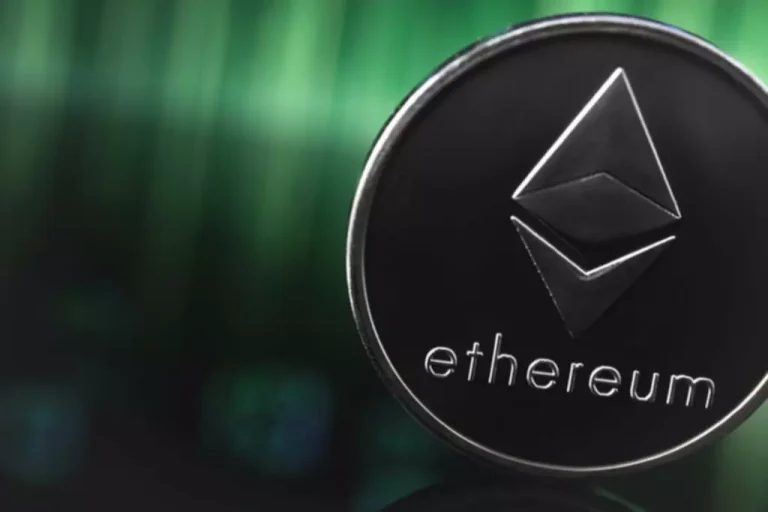You have probably heard about the news about Ethereum switching from PoW to PoS consensus mechanism in the first half of 2022.
It’s a step that Ethereum has been planning for a long time. The switch is supposed to use 99% less energy and make the network more scalable. Another reason to switch from PoW to PoS is to reach 100,000 transactions per second potentially.
But what does the switch entail, and what are the potential risks of the new Ethereum proof of stake? Keep reading the article to learn more about the topic.
What is Proof of Work?
Before we dive into Ethereum’s switch to a proof-of-stake mechanism, let us figure out what is proof-of-work and why Ethereum wants to switch in the first place.
PoW is a system where miners compete against each other to get the chance to solve a complex algorithm. Solving this complex algorithm means: the miner adds a new block to the chain and gets the reward in cryptocurrency. Miners use computers or special machines called ASICs.
The process is called mining because it requires energy and resources to complete the task. The process is a digital version of mining precious metals from the planet.
The miner adds a new block and broadcasts it to the network of nodes. These nodes from that moment will individually perform audits of the existing ledger and the new block.
The good news is that the proof-of-stake mechanism makes the network more secure. It isn’t just difficult to attack the system, and it’s also time-consuming. Attacking PoW is also expensive. Attackers have to follow miners’ footsteps — buying expensive equipment, spending money on electricity. Not to mention that they also have to compete in a very competitive environment to solve the puzzle.
But the bad news is that proof-of-work consumes a lot of energy. This excessive expenditure leads to a negative impact on the environment. And that’s one of the reasons why Ethereum wants to switch to proof-of-stake. So, let’s take a look at how this mechanism works.


Turnkey Brokerage Solution For Your Business
Get the most profitable fully licensed fx/crypto brokerage software or ready-to-operate business in 48 hours. Best-in-class web & mobile trading platforms, sales-driven CRM, full integration with MT4/5, and 150+ payment providers.
What is Proof of Stake?
So, what is proof of stake? It’s also a cryptocurrency consensus mechanism for processing financial transactions and adding new blocks to a blockchain. Proof of stake reduces the computational work necessary to verify nodes and transactions within the blockchain. Thus, it makes cryptocurrency transactions secure.
Proof of stake uses a different mechanism to verify blocks and transactions — it uses the machines of coin owners. The cryptocurrency owner offers their stake of coins as collateral in exchange for a chance to validate blocks. These coin owners who create stakes become validators within the ecosystem.
Then the system randomly selects a validator to validate the block. Instead of mining, this process is sometimes called staking. Instead of creating a competitive environment, the system chooses a random stakeholder that can add a block and receive a reward.
Users have to stake a specific amount of coins to become validators. Since we are talking about Ethereum, it will ask for 32 ETH after switching to PoS. Another innovation is that several, not one validator verifies the block before adding it to the system.
Blockchains using PoS use different mechanisms to validate blocks. When it comes to Ethereum, it plans to use shards for transaction submissions (more on that in the “The Beacon Chain” section).
A key point here is that Ethereum will require at least 128 validators. Once stakeholders validate all shards, the block is created. Then two-thirds of validators have to agree on the transaction’s validity, and then the system closes the block.

Proof of Stake vs. Proof of Work
Now you know how both of these consensus mechanisms work. But what about proof of stake vs proof of work? Here is an easy-to-understand table with the pros and cons of each mechanism to better understand the difference.
Pros & Cons
Proof of Work
Proof of Stake
Pros
- Healthier competition. The mechanism enables all participants to win the chance to add new blocks.
- Security. The cost of hardware and electricity offers two layers of security.
- Trapped energy. It’s hard to imagine, but some locations have energy without use. But PoW offers where to apply it to get value.
- Renewable energy. Electricity is expensive and makes miners switch to cheaper renewable energy. This partially fixes the excessive power consumption.
- Efficiency. The proof-of-stake mechanism uses less energy compared to its predecessor proof-of-work.
- Censorship resistance. The mechanism aims to reduce power consumption, and thus reducing the risk of being located. That way, it’s nearly impossible to identify the validator and stop them from working.
- Transaction speed. The mechanism reduces the risk of complex computer problems, so it increases the transaction speed.
- Easier to begin. Miners don’t need expensive hardware, and they only need to buy ETH and create a stake.
Cons
- Energy consumption. It’s a well-known fact that PoW “eats” a lot of energy.
- Carbon footprint. Excessive use of electricity leads to negative environmental effects.
- E-waste. Companies come up with new equipment and chips often used only for mining. But eventually, they become outdated, which leads to huge waste.
- Traceability. Authorities forbidding mining can trace huge energy consumption and shut down mining.
- ASIC monopoly. Companies developing ASIC rigs don’t let smaller companies into business.
- Possible centralization. Stakeholders with big amounts of coins can lead to the centralization of the blockchain system.
- No proof at large scale. Ethereum can become this example, but today, there are no big examples like Bitcoin’s proof-of-work.
- It’s new. The mechanism is still new, and it’s hard to tell what challenges it may face, especially on a bigger scale.
Why is Ethereum Switching Now?
It’s pretty clear that since the Ethereum platform is so widely used, energy consumption is a huge concern. But why hasn’t Ethereum switched back when the PoS mechanism was introduced in the first place?
The main obstacle for faster adoption of proof-of-stake has been the difficulty of transferring the biggest smart contract network Ethereum from one mechanism to another. This task for a while seemed impossible since thousands of existing smart contracts are located on the Ethereum blockchain, and billions of dollars in assets are at stake.
A considerable factor slowing down the process of switching from proof-of-work to proof-of-stake is the scale of the industry. It’s a known fact that Ethereum’s blockchain is used to build other ecosystems on top of it. Here are just a few examples of these successful ecosystems:
- DeFi, or Decentralized Finance. The project grew from zero funds to a market cap of $76 billion!
- NFTs, or non-fungible tokens. The market for NFTs nearly exploded and brought $2.5 billion at the end of 2021.
The main takeaway here is that the Ethereum Network has been expanding and progressive at a fast rate. It’s why it’s such a challenging task to switch from one algorithm to another. The developers of the blockchain should consider all the factors impacting the switch.
It would be a lot easier to switch before the blockchain became so popular and widely adopted all around the world. This factor should be included since the network has to work even during the switch.
Moreover, Ethereum is a nig network with users and developers all around the world. It’s important to reach a consensus among all participants of the process. But it seems soon the switch will finally take place, and one of the most used blockchain networks will have fewer impacts on the environment.
The Beacon Chain
There are other reasons why it took so long for Ethereum to decide to switch to a different algorithm. Switching from proof-of-work to proof-of-stake will add a few complexities to the shard chains. These are separate blockchains, and they need validators to pass through transactions and add new blocks.
The idea is to create 64 shard chains. Each shard chain will have a shared understanding of the blockchain’s state. This creates the need for extra coordination, which will be the task of a beacon chain.
The beacon chain gets state data from shards and makes it available for other shards. As a result, the beacon chain allows the network to remain synchronized. The beacon chain also aims to manage the validators from registering their stakes to getting their awards and penalties.
What are the Risks?
The switch can’t happen without risks. Ethereum’s transfer to proof of stake is a huge responsibility. Ethereum is a place of thousands of smart contracts operating on Ethereum’s blockchain, and as mentioned, billions of dollars are at stake.
It’s worth mentioning: even though staking isn’t as harmful to the planet as the proof of work algorithm, it may cause some problems. The critics of the switch mention that proof-of-stake is not more effective than proof-of-work when maintaining decentralization. It works similarly — those with bigger stakes (more money) generate more money.
Ethereum proof of stake is also at risk since the mechanism hasn’t been proven as proof-of-work platforms have. Bitcoin and its PoW have been around for over a decade, and several other popular platforms also use this mechanism.
Even though several big and popular cryptocurrencies, such as Tezos, Cardano, Algorand, use the proof-of-stake mechanism, these are smaller projects compared to Ethereum. It’s hard to tell what Ethereum proof of stake will look like. New vulnerabilities may occur once the new ecosystem is available.
Some experts also predict that if miners may be dissatisfied with the new ecosystem, they may create a competing chain. Even though it doesn’t seem like a problem at first, the issue is the duplicate. The fork may automatically create duplicates of coins, NFTs, smart contracts existing within Ethereum.
But the good news (you can say so) is that the duplication problem already occurred in 2016. Back in the day, Ethereum had to roll back the blockchain to get rid of a significant hack. As a result, community members weren’t happy, so they kept mining on the original blockchain.
As a result, today, we have two Ethereum chains — the current one and the Ethereum Classic. If this situation occurs again, it may affect the success of the new version of Ethereum and its potential to compete. But since this situation has already occurred in the past, Ethereum officials probably came up with the plan to avoid a competing fork.
But even though there are significant risks to switching from one mechanism to another, it needs to be done. Ethereum doesn’t want to repeat Bitcoin’s path and further accelerate the negative environmental impact.






